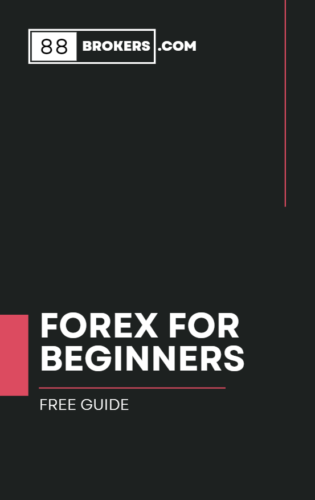User Experience Matters: The Most Intuitive Broker Platforms Reviewed
5 November 2024Top 5 Brokers for Options Trading: Features and Benefits Compared
5 November 2024Hidden Fees in Brokerage Accounts: What to Watch Out For
Why Hidden Fees Matter in Brokerage Accounts
Many investors are drawn to the allure of “zero-commission” brokers, but it's important to remember that brokers still need to make money. They often do so by implementing fees that are less obvious but can accumulate over time. Understanding these fees can help you choose the right brokerage account and manage your investments without unexpected costs.
Common Hidden Fees in Brokerage Accounts
Let’s break down some of the most common hidden fees you may encounter in a brokerage account:
1. Inactivity Fees
Some brokers charge an inactivity fee if you don’t meet a minimum amount of trading activity or balance in a specific period, typically quarterly or annually. This can be particularly frustrating for long-term investors who don’t trade frequently.
- Tip: Choose brokers with no inactivity fees, especially if you’re a buy-and-hold investor.
2. Account Maintenance Fees
Account maintenance fees are recurring charges some brokers apply for simply holding an account. This can be an annual or monthly fee, which can accumulate over time, especially for smaller accounts.
- Tip: Look for brokers that offer no-maintenance-fee accounts or waive the fee if you maintain a certain balance.
3. Withdrawal and Transfer Fees
Many brokers impose fees for withdrawing funds or transferring accounts to another broker. These fees can vary widely, with some brokers charging as much as $75 for account transfers.
- Tip: Before opening an account, check the broker’s withdrawal and transfer fee policies. Some brokers offer free or low-cost transfers to attract and retain customers.
4. Wire Transfer Fees
Wire transfers can be an efficient way to fund your brokerage account, but they often come with fees—sometimes for both incoming and outgoing transfers. Domestic transfers can cost around $25, while international transfers may be even higher.
- Tip: Consider using ACH (Automated Clearing House) transfers instead of wires, as ACH is typically free with most brokers.
5. Paper Statement Fees
If you prefer receiving printed statements, some brokers charge fees for mailing them. This fee can usually be avoided by opting for electronic statements, which most brokers offer for free.
- Tip: Switch to electronic statements to save on unnecessary fees and enjoy easier access to your records.
6. Foreign Transaction Fees
Investors looking to trade international stocks or use their brokerage account to hold foreign currencies may incur foreign transaction fees. These fees can range from 1% to 3% of the transaction amount and may apply to both purchases and sales of international securities.
- Tip: Look for brokers with low foreign transaction fees or specific accounts designed for international investing.
7. Margin Interest Rates
If you trade on margin (borrowing funds from the broker to buy more securities), you’ll pay interest on the borrowed amount. Margin rates vary, but even small differences can lead to significant costs if you hold a margin balance over time.
- Tip: Compare margin rates across brokers before trading on margin, and be cautious about borrowing too much.
8. Advisory Fees
Many brokers offer advisory services, including robo-advisors or human financial advisors. While these can be valuable, they come at a cost—typically a percentage of your assets under management (AUM). Robo-advisors may charge around 0.25% annually, while human advisors can cost significantly more.
- Tip: Decide if you need advisory services. If you’re confident managing your portfolio, a lower-cost, self-directed account may be a better fit.
9. Research and Data Fees
Some brokers charge for premium research, real-time data, or advanced charting tools. While basic tools are often free, advanced traders may find themselves paying extra for more comprehensive features.
- Tip: Many brokers offer free research and tools, so compare the offerings and choose one that meets your needs without extra charges.
10. Currency Conversion Fees
If you’re trading securities in foreign markets, brokers may apply currency conversion fees when converting your currency to the foreign currency needed for the trade. This fee is often a percentage of the transaction and can be an added cost when trading globally.
- Tip: Look for brokers that offer low or transparent currency conversion fees if you plan to trade internationally.
How to Minimize Hidden Brokerage Fees
While it may be impossible to avoid all fees, here are a few strategies to help you keep these costs to a minimum:
- Read the Fine Print: Always review the broker’s fee schedule before opening an account. This document will outline all potential charges, including hidden fees.
- Choose a Broker with Transparent Pricing: Some brokers are known for transparent pricing with minimal hidden fees. Doing your research can save you from surprise charges.
- Opt for Electronic Statements: Paper statement fees are easily avoidable by switching to electronic statements.
- Use ACH Transfers: Avoid using wire transfers unless absolutely necessary, as ACH transfers are generally free.
- Limit Margin Usage: Margin trading can be costly due to interest rates, so only use it when necessary and manage your margin balance wisely.
Final Thoughts on Hidden Fees in Brokerage Accounts
Hidden fees can be a major factor in your overall investment returns. By understanding and avoiding these fees, you can keep more of your earnings. Brokers like Fidelity and Charles Schwab are known for their transparency and low-fee structures, but it’s essential to choose a broker that aligns with your trading habits and needs.
Ultimately, minimizing brokerage fees involves careful research and a clear understanding of your account’s terms. Make sure to review your broker’s fee schedule regularly and stay informed of any changes to avoid unexpected costs.





